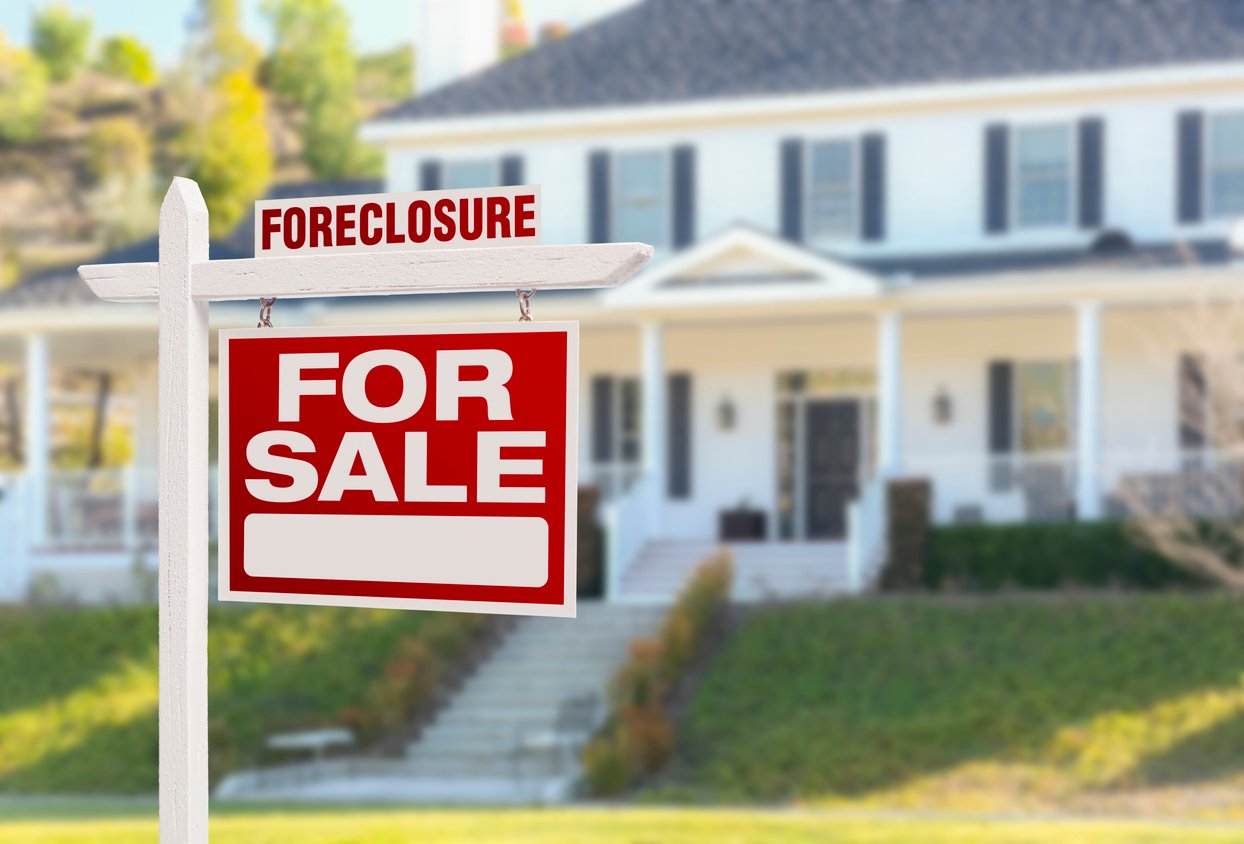Since the last Covid-related mortgage moratoriums ended on 31 July 2021, U.S. foreclosure filings have risen. In September, lenders started the foreclosure process on 36,684 properties, up 8% from August and 15% from September 2022.
As a real estate investor or agent, understanding the current foreclosure market can help you land hidden deals in the form of motivated sellers. For example, you may be able to find a homeowner at risk of foreclosure (AKA in “pre-foreclosure”), allowing you to negotiate a deal on the property before it is repossessed. This creates a win-win scenario, in which you’re helping a homeowner in a compromising financial situation rid themselves of a burdensome property while securing a new business opportunity (e.g., for investors, a below-market property investment, for agents, a new listing).
In this post, we’ll delve into what foreclosure is, what causes it, the 10 states with the highest foreclosure rates, and how you can find leads within this demographic.
Table of Contents |
What Is Foreclosure?
Foreclosure is the legal process by which a lender repossesses a property after the homeowner misses several consecutive mortgage payments (or otherwise fails to meet their end of the mortgage agreement).
A home is considered in pre-foreclosure when the homeowner defaults on their payments. Once a lien against a pre-foreclosure home is approved and activated (a process that can take up to a year), the property is officially in foreclosure.
What Causes Foreclosure?
Typically, homeowners fall into foreclosure because their income has been compromised. They may experience a medical emergency, job loss, divorce, or another unpredictable event that makes it hard to keep up with mortgage payments.
Additionally, housing costs have outpaced wage growth over the last decade, leading many homeowners to push the limits of what they can afford.
| ❗Did you know? The U.S. government defines affordable housing as paying no more than 30% of your income on housing. |
While this is the recommended amount to pay for affordable housing, this balance isn’t maintained ideally in some places in the United States.
For example:
The typical U.S. home price is currently $350,113, while the median household income is $74,580 (adjusted for inflation). That means the typical household should pay at most $1,864.50 on monthly housing costs (based on affordable housing definitions), yet a 30-year fixed-rate mortgage on the standard $350,113 at a 7% interest rate would far exceed that budget ($2,329 monthly), above the 30% target.
In October, mortgage rates topped 8%, further stretching many homeowners’ housing budgets. This may help explain why, in Q3 2023, lenders foreclosed on 1 in every 1,389 housing units, a 3.01% increase from Q2 and an 8.54% increase from Q3 2022.
10 States With the Highest Foreclosure Rates

Here are the 10 states with the highest foreclosure rates in Q3 2023:
1. New Jersey
- Foreclosure rate: 1 in every 794 housing units
- Typical home price: $507,923 (145% of the typical U.S. price)
- Real median household income: $92,340
New Jersey has the highest foreclosure rate of any state. This is partially due to the lengthy foreclosure process, which takes 1,593 days on average. It doesn’t help that New Jersey had one of the highest foreclosure rates pre-pandemic, creating a backlog of foreclosures on top of new filings.
In April, New Jersey’s Atlantic City had the highest foreclosure rate of any U.S. metropolitan area. Experts attribute this to a recent decrease in home values and equity, above-average unemployment, and below-average household income.
2. Maryland
- Foreclosure rate: 1 in every 816 housing units
- Typical home price: $418,269 (119% of the typical U.S. price)
- Real median household income: $108,200
Despite a relatively high median household income, Maryland has the second-highest foreclosure rate of any state. In the first half of 2023, it saw the most significant increase in foreclosure activity compared to a year ago (up 100%). In June, it had the highest foreclosure rate of any state (one in every 1,733 housing units).
The Baltimore-Columbia-Towson metro area was hit particularly hard with second-quarter foreclosure activity above pre-recession averages.
⚡These statistics show that although the typical home price and median household income play a significant role in home affordability and foreclosure rates, there are other factors that impact it as well.
3. Nevada

- Foreclosure rate: 1 in every 818 housing units
- Typical home price: $432,527 (124% of the typical U.S. price)
- Real median household income: $72,330
Nevada ranks third for the highest foreclosure rate. In September, a local news outlet reported that the state’s Las Vegas metro area had the highest foreclosure rate of any U.S. city, with more than 1 million residents. Interestingly, Las Vegas was one of the cities hit hardest by the 2008 housing crash, when home prices plummeted by 60%, nearly twice the national rate.
However, Nevada homeowners are in a much better financial position than they were back then, making a repeat of 2008 unlikely. Nevada’s current uptick in foreclosures is likely due to a backlog from the 2020 pandemic when lockdowns halted tourism, and many people lost their jobs.
4. South Carolina
- Foreclosure rate: 1 in every 832 housing units
- Typical home price: $287,956 (82% of the typical U.S. price)
- Real median household income: $61,770
Though South Carolina home prices are below the national average, so is the median household income ($61,770 compared to $74,580). Consequently, keeping up with mortgage payments can be challenging for many South Carolinians.
In June, South Carolina’s Florence showed the second-highest increase in foreclosures of any U.S. city (15% increase). In Q3, the state’s capital, Columbia, had the fifth-highest foreclosure rate among 223 metro areas (1 in every 503 housing units).
5. Delaware
- Foreclosure rate: 1 in every 843 housing units
- Typical home price: $370,761 (106% of the typical U.S. price)
- Real median household income: $80,750
Delaware’s typical home price and median household income are relatively average. Still, the state ranks fifth for the highest foreclosure rate. In fact, in October, Delaware had the highest foreclosure rate at one in every 2,432 housing units.
This is partly due to Delaware being one of twenty states with a judicial foreclosure process, which involves the court system and typically takes longer than the non-judicial process. Hence, more homes are in foreclosure at a time.
6. Illinois

- Foreclosure rate: 1 in every 873 housing units
- Typical home price: $255,659 (73% of the typical U.S. price)
- Real median household income: $78,020
Illinois ranks sixth for the highest foreclosure rate in Q3 2023. In the first half of the year, the state even topped the list with 0.25% of all housing units having a foreclosure filing.
One reason many Illinoisians end up in foreclosure is the high property taxes. The state has the second-highest property taxes in the U.S. (an effective rate of 2.08%). Other reasons may include a weakening job market.
7. Florida
- Foreclosure rate: 1 in every 932 housing units
- Typical home price: $407,218 (116% of the typical U.S. price)
- Real median household income: $65,370
Florida home values are above the national average, yet household incomes haven’t kept up. Consequently, many homeowners are struggling with housing costs. In May, Florida had the most foreclosures of any state.
Some experts attribute the rise in Florida foreclosures to homeowners who signed forbearance agreements without fully understanding them. Another factor could be the rise in homeowners’ insurance costs due to recent hurricanes. Some homeowners' premiums have increased two to three-fold, putting extra pressure on housing budgets.
8. Ohio
- Foreclosure rate: 1 in every 955 housing units
- Typical home price: $220,031 (63% of the typical U.S. price)
- Real median household income: $67,520
Ohio foreclosures are up in all of the state’s metro areas, including Columbus, Cincinnati, and Cleveland. Additionally, Cleveland has the highest zombie foreclosure rate of any major metro area, with at least 500,000 residential properties and at least 100 homes facing foreclosure.
Much of the increase in foreclosures can be attributed to the backlog of default notices being served to homeowners whose pandemic moratoriums have ended. The increase in zombie foreclosures may also be due to increased home values encouraging second-mortgage holders to collect on delinquent debt.
9. Connecticut

- Foreclosure rate: 1 in every 1,025 housing units
- Typical home price: $405,050 (116% of the typical U.S. price)
- Real median household income: $90,730
Connecticut is the first state on the list with a foreclosure rate below 0.01% (1 in every 1,025 housing units). However, that’s still higher than the foreclosure rate in 39 other states and 51.5% higher than Q3 2022.
According to a local foreclosure attorney, an increasing number of Connecticut homeowners are also victims of zombie debt. Now that home values have increased, more lenders are coming to collect on second mortgages.
10. Indiana
- Foreclosure rate: 1 in every 1,144 housing units
- Typical home price: $233,554 (67% of the typical U.S. price)
- Real median household income: $70,030
Lastly, Indiana has the tenth-highest foreclosure rate of any state. Foreclosures are particularly prevalent in Elkhart, Indiana, which had the second-highest foreclosure rate (1 in every 1,621 housing units) of all metro areas with populations of at least 200,000 in May.
Reasons behind Indiana’s rise in foreclosures may include a weakening job market. A recent study ranked Indiana as the sixth worst state to find a job.
Find Your Next Pre-Foreclosure Deal With PropStream!
Whether you’re a real estate agent or investor, PropStream can help you find your next pre-foreclosure deal in one of the regions mentioned above.
| Sign up for our free 7-day trial today and get 50 pre-foreclosure leads on us! |
Note on sources:
- Unless otherwise cited, foreclosure data taken from ATTOM
- Typical home prices taken from The Ascent
- 2022 real median household income taken from Federal Reserve Economic Data (FRED)
